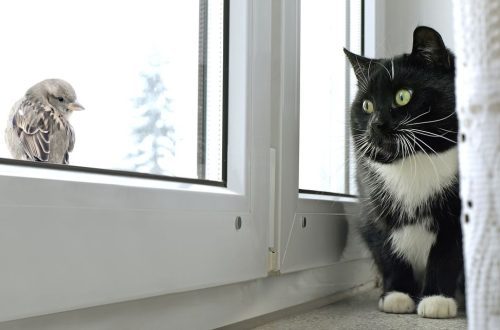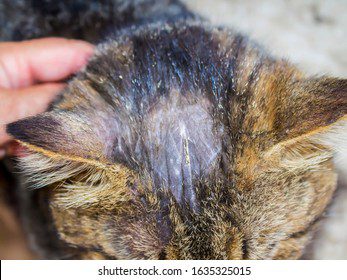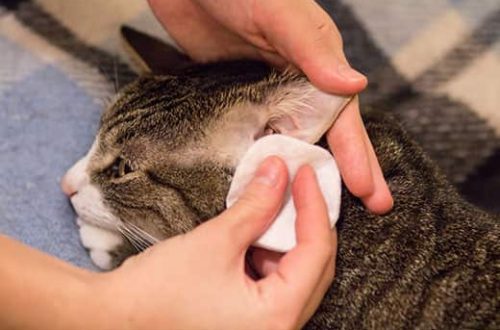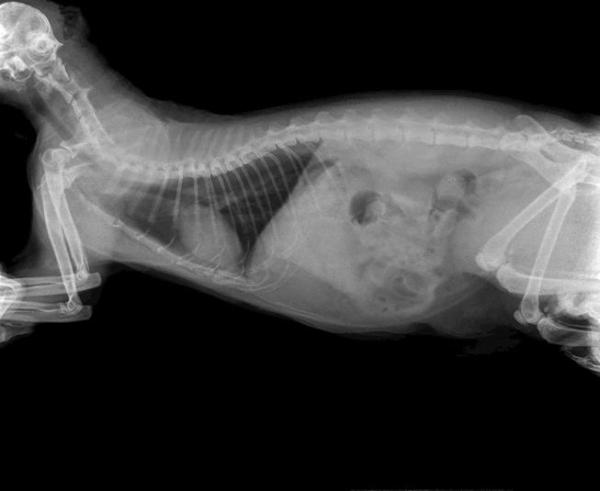
Intestinal obstruction in cats: symptoms, treatment and prevention
Like dogs, cats, especially young and curious ones, can swallow objects that can get stuck in their gastrointestinal tract. This sometimes leads to a painful and potentially life-threatening condition called intestinal obstruction or blockage of the cat’s intestines. How to diagnose and treat this condition?
Contents
Common Causes of Bowel Obstruction in Cats
If the pet has intestinal obstruction, most likely, she ate something that she should not have eaten. Most foreign bodies pass through the digestive tract without problems, but sometimes the object is too large to pass through the intestines. This phenomenon is called foreign body obstruction.
Another common cause of bowel obstruction in cats is the ingestion of string, string, or Christmas tree tinsel. It is called linear foreign body obstruction. In any case, the pet may need surgical assistance to remove the object stuck in the gastrointestinal tract.
What happens with intestinal obstruction in a cat
When a cat swallows food, it first enters the stomach, and then passes through the small, large and rectum, and finally exits through the anus in the form of feces.
But in case of blockage of the intestine, the movement of food through it becomes impossible. If the pet continues to eat and drink, fluid and food will accumulate behind the “obstruction”, causing swelling, inflammation and bloating. If the blockage occurs in that part of the intestine that is closer to the stomach, it causes vomiting. If the blockage is observed closer to the tail, it leads to diarrhea. Complete bowel obstruction is considered a life-threatening condition if left untreated.
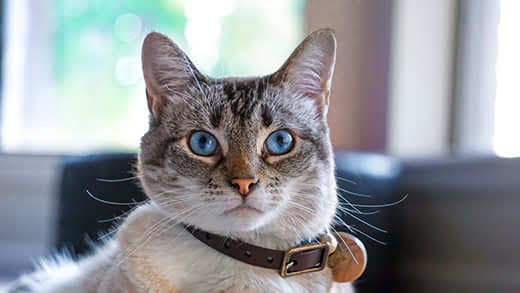
Signs and symptoms of intestinal obstruction in cats
In the case of intestinal obstruction, the cat may experience such signs as:
- vomiting food or liquid;
- diarrhea, sometimes with traces of blood;
- abdominal pain;
- loss of appetite;
- lethargy;
- desire to hide
- difficult defecation;
- a smaller amount of feces compared to the norm;
- increased aggressiveness;
- touching the muzzle with a paw, which is observed when the cat swallows the thread and wraps it around the base of the tongue.
If your pet shows any of these signs, contact your veterinarian immediately.
Bowel obstruction in cats: what to do and how to diagnose
To diagnose a cat’s condition, a veterinarian will need to consider a number of factors. He will use any information provided about changes in the cat’s behavior and any unusual behavior that the owner may have noticed.
The specialist will perform a complete physical examination and may recommend a series of laboratory blood and urine tests, x-rays, or an abdominal ultrasound to check for any symptoms of an obstruction.
Treatment of intestinal obstruction in a cat
Partially blocked intestines can be treated without surgery. In this case, the cat is hospitalized, given fluids and pain medication, and checked to see if the blockage has resolved on its own. If the blockage persists, the foreign body will need to be surgically removed.
After the operation, the pet will most likely be discharged with medication. These may include pain relievers, anti-nausea medications, and possibly antibiotics. It is necessary to give all medicines in accordance with the instructions of the specialist and strictly follow all instructions for postoperative care.
The cat will probably need to wear a protective collar so that she cannot damage the seams. After the operation, she will need to rest and may have to limit her activities.
In addition, it is important to feed your cat a soft, easily digestible food that does not overload the digestive system. While recovering from surgery, your veterinarian will likely recommend medicated cat food.
Prevention of intestinal diseases in cats
If the pet is curious and playful by nature, loves to explore the surrounding space and has already eaten something in the past that could clog the intestines, it is worth secure the house. Keep items that your cat can swallow in closed drawers or cupboards, such as rubber bands, paper, wool, hairpins, or hair ties. When a pet plays with small toys, it is worth watching her, and before leaving, remove all small items. If your cat likes to chew on plants, you may need to limit access to them.
With some up-to-date information on the topic and careful planning, you can keep your cat from eating unsuitable food items. And if this does happen, it is necessary to monitor the signs and timely identify situations when to seek help. If in any doubt, it is best to consult your veterinarian.



